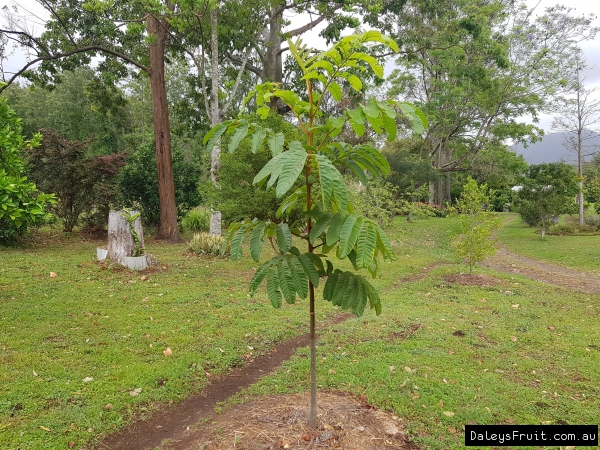Native Tamarind
Diploglottis australis$4.95 ($4.95-$18.75 choose a size)
When will it be in Stock?
We previously had the most to buy in Apr and Oct. With limited quantities for sale in other months.Remember to click above to get notified when it is available once more.
Specifications of Native Tamarind
Preferred Climate SubtropicalLearn About Climate Zones
Grown From SeedlingLearn About Propagation Methods
Max Height (when in the ground with good conditions) +10m
Plants required to Pollinate 1 (Self Pollinating)Learn about Pollination
Can it Handle Frosts? Sometimes
Amount of leaves in Winter? All Leaves (Evergreen)
Water Requirements Moderate Watering
Is it a Dwarf Fruit Tree? No (Full Size)
Time to Fruit/Flower/Harvest 5+ Years
Sun or Shade Part (Sun:50-80%)
Preferred Soil Type Good Drainage
Soil pH Neutral (6.6-7.3pH)
Fruiting/Harvest Months February, March
Create a Filter to find similar plants
Customers also bought
These plants are often purchased together. Also check plant information for suitability in your orchard.
Chinese Red Bayberry
$89.00 ($46.95-$129.00 choose a size)
Orange Berry
$17.90 ($17.90-$29.00 choose a size)
Australian Round Lime
$49.00 ($29.00-$49.00 choose a size)
Lime - Tahitian
$40.95 ($39.00-$69.00 choose a size)
Pepper - Black
$29.00 ($29.00-$39.00 choose a size)
Carob - Clifford
$99.00 ($69.00-$119.00 choose a size)
Customer Tips & Reviews Native Tamarind
Native Tamarind
Intense lemon flavour superb in jams sauces and syrups. Jam or sauce.....blended fruit cooked with sugar into a thick syrup. Great as jam, with cheese platter or simple use as lemon flavour in all dishes cakes etc.
Tamarind Native
Pullenvale QLD - Four in garden, very fast growing tree, my trees were all planted from tube stock and are all over 3m. Planted them close together to force height.































